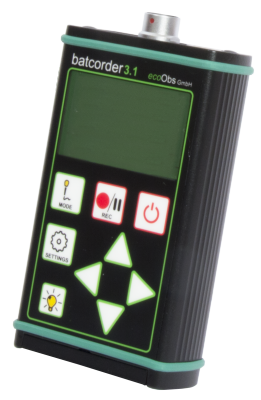ecoObs are a small German company at the forefront of full spectrum bat call recording and identification. They produce the Batcorder 3, a highly optimised bat detector (each new microphone arrives with its own calibration factor to ensure that comparisons between units are valid) designed to consistently record bat calls of sufficiently high quality to make auto-identification possible. Calls can then be processed using ecoObs software bcAdmin 3.0, bcAnalyse 2.0 and batIdent. These enable the rapid and accurate identification of common bat species, speeding up the identification process by up to 70% and allowing users to focus more time on rare or interesting bat species. We asked ecoObs co-founder and managing director Volker Runkel to introduce the company.
Tell us a little about your company and how you got started
For my PhD thesis I developed a quite basic and rather well working solution for passive monitoring of bats. Already then I saw that automation in data collection as well as analysis was one of the keys to focus on, instead of all raw analysis work. We quickly realized there is a huge demand for such a solution. We then were lucky and found an engineer who partnered up with us and redesigned the hardware so it was power efficient, small and easy to use. The batcorder system was born.

What challenges do you face as a company in the ecology/natural history sector?
The sector is rather small and as a hardware producer we for example often have problems acquiring small quantities of parts. In electro-engineering small companies still require some hundred thousand parts while we ask for a mere thousand. Also the demand for devices is highly seasonal – 90% of orders arrive within a few weeks in spring when the bat season starts. On the other end, we have a very vivid and heterogeneous bat worker scene.
What do you consider the most important achievement of your company in recent years?
I think getting the batcorder and the analysis software out in the wild and thus pushing the whole field of passive monitoring and automated bat call identification to where it is now. When we started in 2004 no one believed it would be ever working, and now a rising number of devices and software exists.
What is your most memorable wildlife/natural history encounter?
Spotting and touching an Echidna in the wild!






